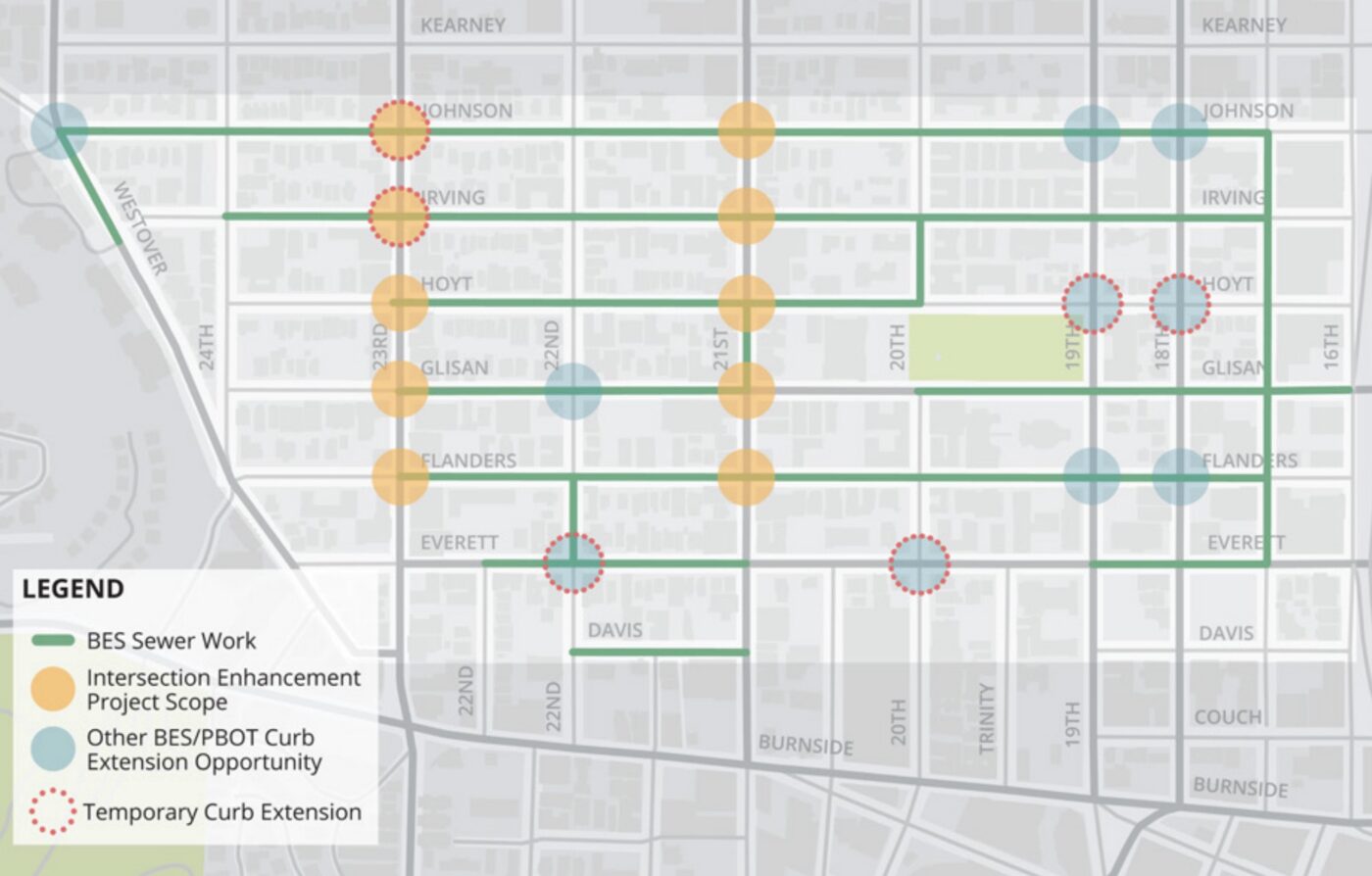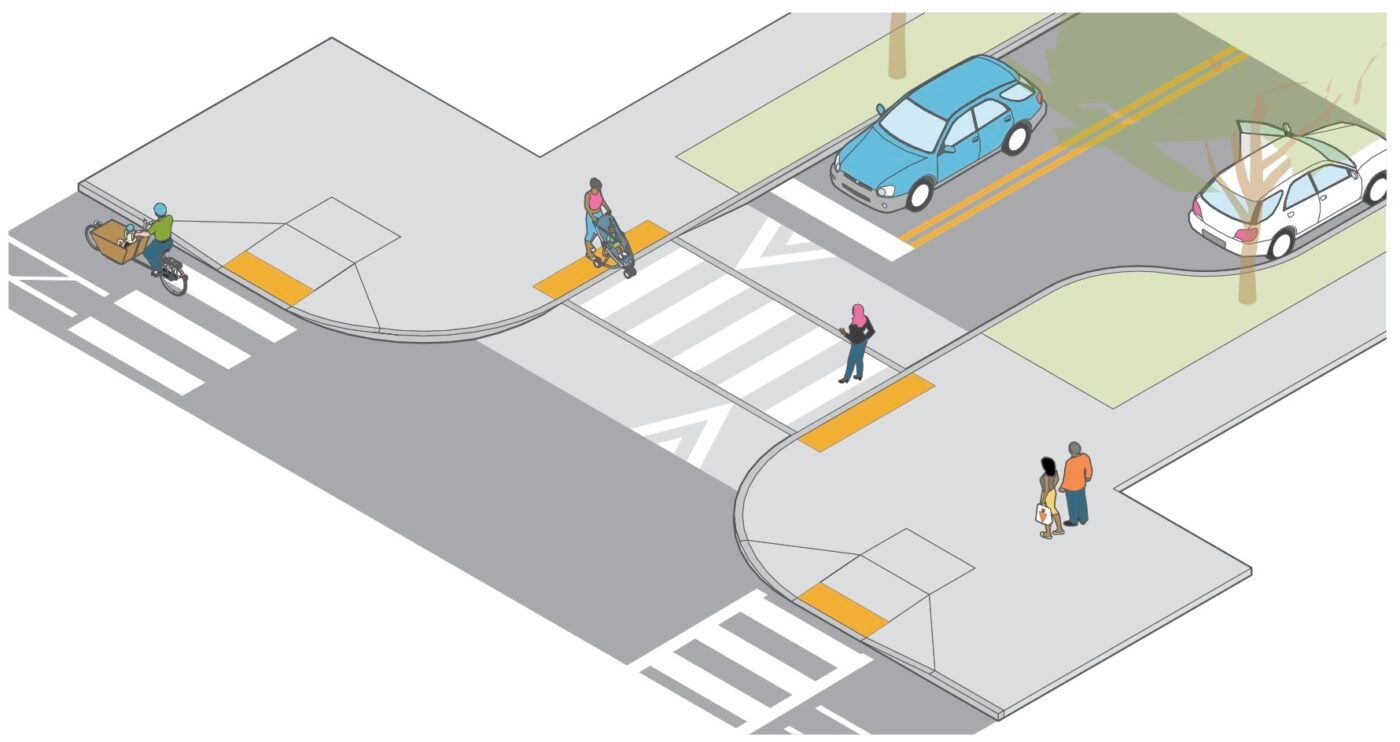
The Portland Bureau of Transportation is hitching their wagon to a sewer line replacement project that will allow them to make significant changes to 10 intersections in northwest Portland.
Because they need to match a Bureau of Environmental Services project schedule, PBOT is working on a relatively short timeline to dream up and finalize designs for the projects. All 10 intersections are along NW 21st and 23rd streets — both of which are major commercial corridors with dozens of popular destinations. The BES projects entails partial reconstruction of five side streets: Flanders, Glisan, Hoyt, Irving and Johnson. Both Flanders and Johnson are major neighborhood greenways that have recently received major upgrades.
According to the NW Intersection Enhancement project website, PBOT will use the BES project to implement goals already laid out in the NW In Motion plan adopted in 2020. “The benefits of aligning the intersection enhancement work with the BES project include significantly lower costs for enhancements and the opportunity to combine construction timelines to reduce impacts on neighbors and businesses.”
So, what exactly can we expect to change at these 10 intersections? PBOT has contracted with Toole Design to create a “look book” (PDF) that lays out existing conditions and shares photos and drawings of possible changes that could be made.
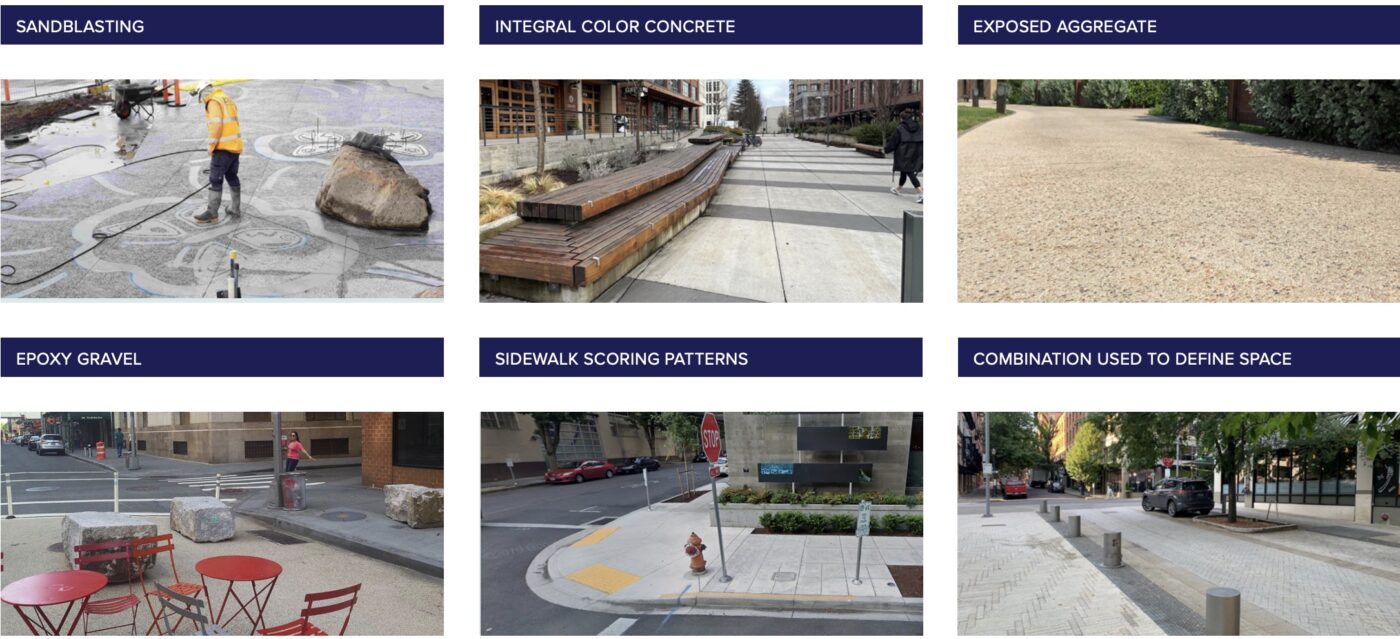
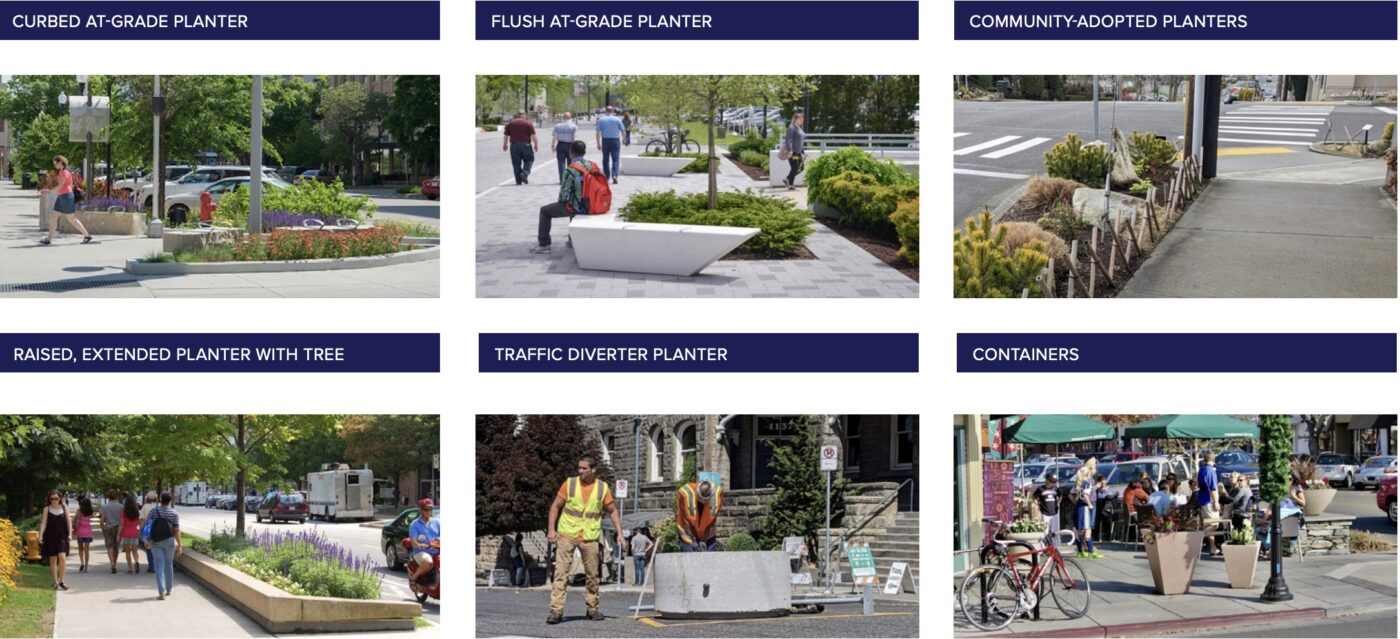
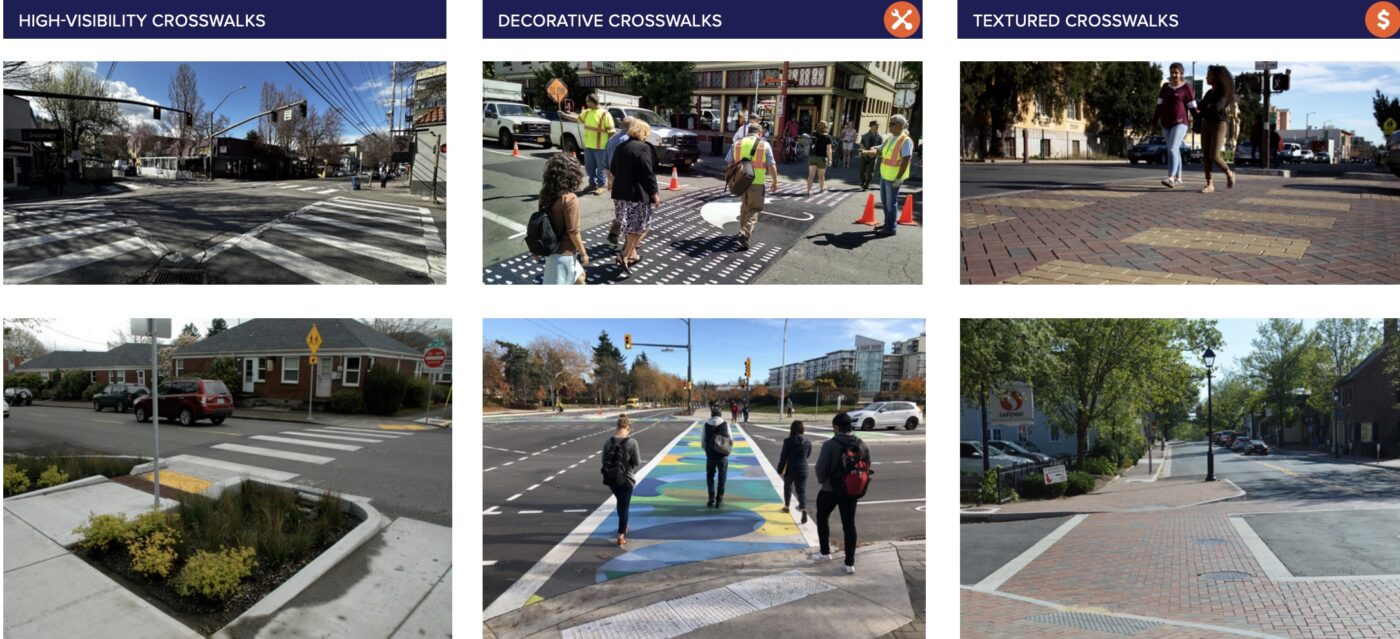
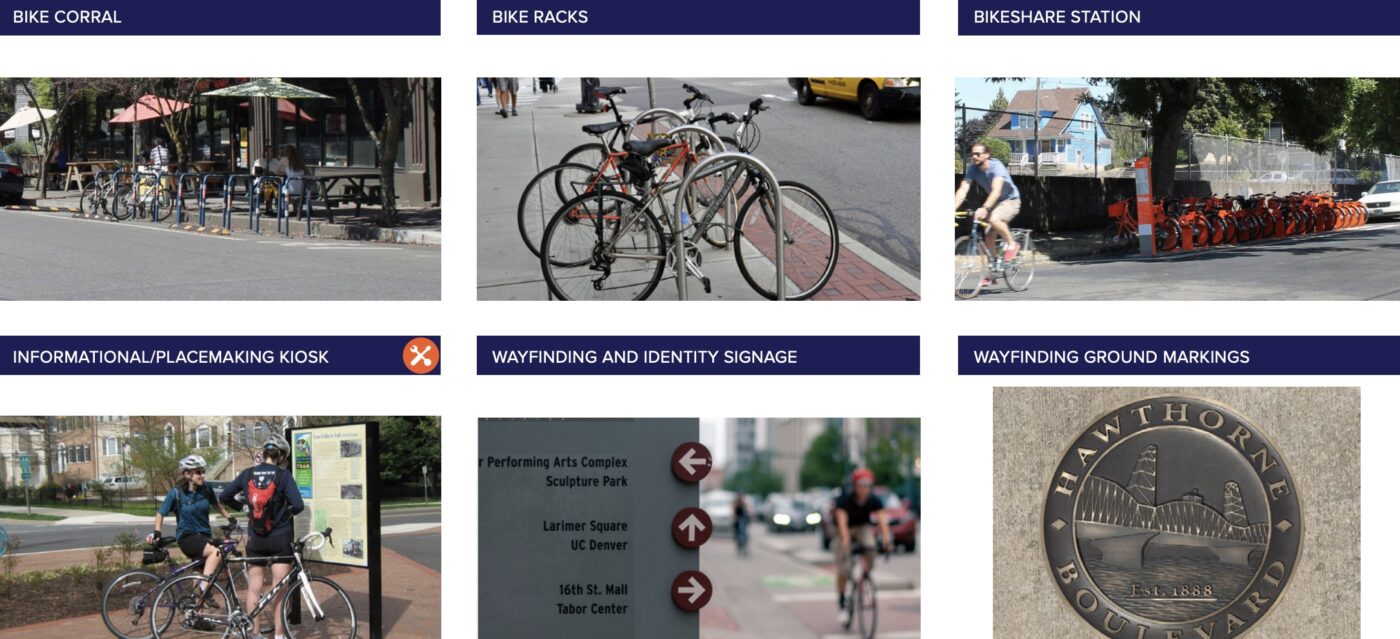
Potential treatments include: curb extensions, high-visibility crosswalks, pedestrian lighting, community placemaking, paving treatments, vegetation, and transit stop upgrades.
Among the more interesting possibilities PBOT is considering is what they call a, “continuous street crossing.” This design would extend the sidewalk on the main street through the intersection and treat the side street more like a driveway, “with pedestrians staying at sidewalk level and cars traveling up and over the sidewalk to access the side street. This design provides a clear design cue that cars are ‘guests’ in this space and pedestrians have priority over motor vehicles.” Put another way, the design puts sidewalk users on a pedestal and makes drivers feel like a lower priority, instead of the other way around we are used to in this country. This type of treatment is common in cities like Copenhagen where the idea that “cars are guests” in some contexts is simply part of the culture.
Here’s more on the idea from PBOT:
“It slows down traffic making turns and encourages waiting for pedestrians to clear before turning. This design also provides much better accessibility for people with disabilities, since it keeps the sidewalk level and does not require curb ramps. PBOT is currently developing standard designs for side street crossings to ensure they work for various types of vehicles and hopes to begin deploying them where feasible and affordable as part of streetscape projects in the future. Because this treatment can be costly, requiring full reconstruction of a leg of an intersection and changes to stormwater management, the most common application would likely be in conjunction with major capital projects that already include a great deal of civil improvements such as ADA curb ramp construction.”
It would be very exciting to see one of these in Portland, and NW 23rd or 21st feels like the ideal place to try it.
Funding for this project will come from parking meter revenue.
PBOT plans to do more public outreach in May and June and designs need to be finalized by the end of July. Construction is planned for 2025. Learn more on the official project page.

